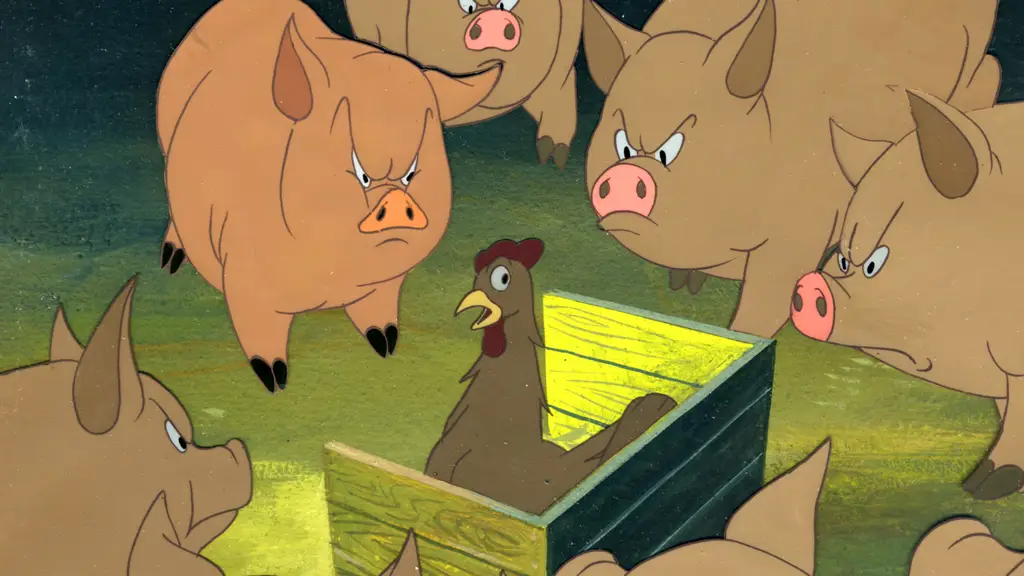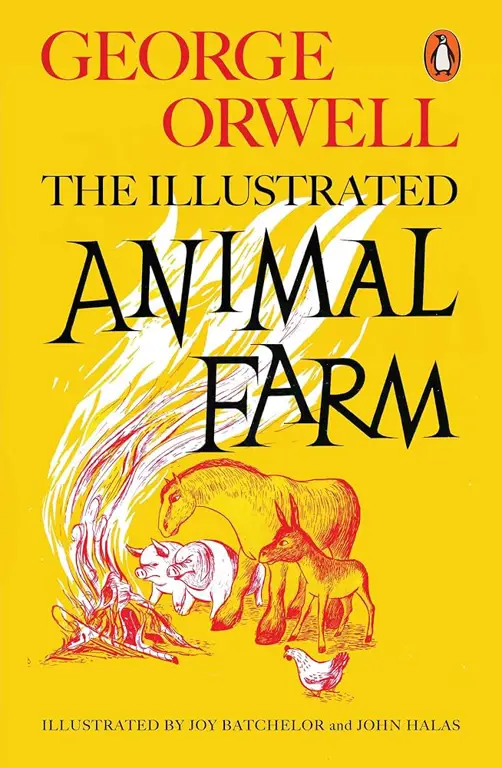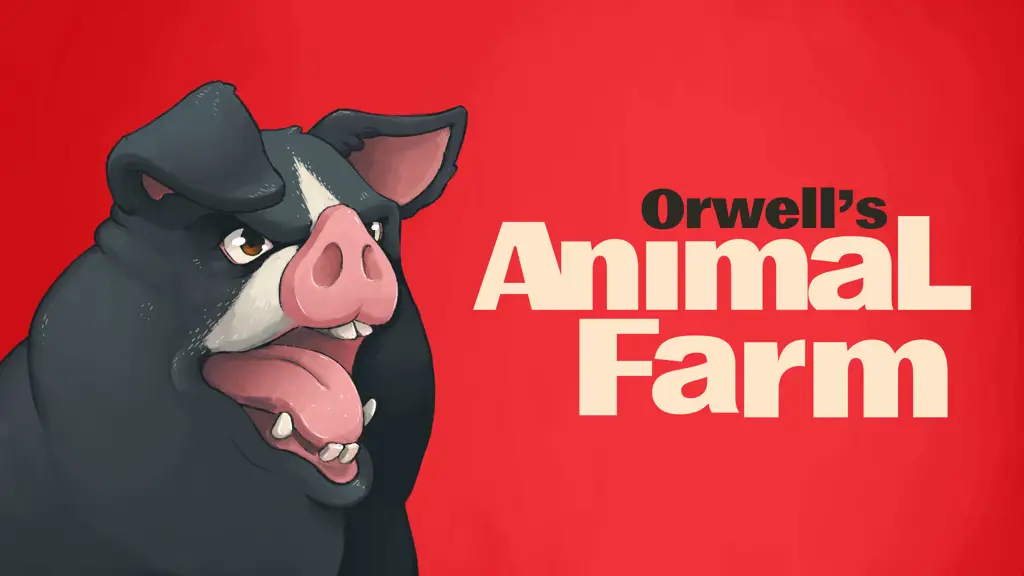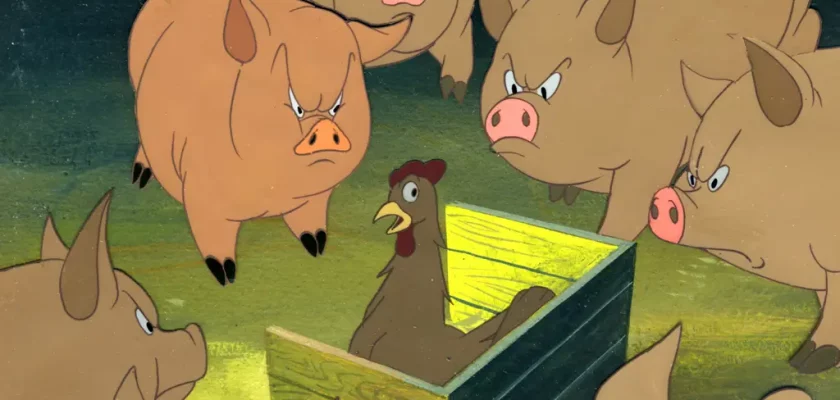George Orwell’s Animal Farm is a masterpiece of satirical allegory, and a significant part of its power lies in Orwell’s masterful use of figures of speech. These rhetorical devices aren’t just decorative; they’re crucial to conveying the story’s complex themes of revolution, power, and corruption. Understanding the figures of speech in Animal Farm unlocks a deeper appreciation of the novel’s enduring relevance.
This article will delve into the various figures of speech employed throughout the novel, analyzing their impact on the narrative and the reader’s understanding of the story. We will explore how Orwell uses these techniques to create memorable characters, develop compelling plots, and ultimately deliver a potent critique of totalitarian regimes.
One of the most prevalent figures of speech in Animal Farm is allegory. The entire story is an allegory for the Russian Revolution and the subsequent Stalinist era. The animals represent various historical figures and social classes, with Old Major symbolizing Karl Marx, Napoleon representing Stalin, and Snowball representing Trotsky. This allegorical approach allows Orwell to subtly criticize the Soviet Union without directly naming it, making his message more impactful and enduring.
Beyond allegory, Orwell skillfully uses satire. The pigs’ gradual accumulation of power and their eventual betrayal of the animals’ original ideals is a biting satire of political corruption and the abuse of power. The pigs’ manipulation of language, particularly their rewriting of history, is another layer of satire that highlights the dangers of propaganda and misinformation.
Personifikasi dan Metafora
Orwell also employs personification extensively, giving animal characters human-like qualities and motivations. For example, the animals’ revolutionary fervor and their initial hope for a better life are portrayed through anthropomorphic characteristics. This personification makes the animals relatable and allows the reader to easily connect with their struggles and disappointments. The animals’ capacity for both noble idealism and brutal self-interest further deepens the satirical impact.
Metaphors abound in Animal Farm, frequently enriching the narrative and adding layers of meaning. For instance, the windmill project can be seen as a metaphor for ambitious yet ultimately futile projects undertaken by totalitarian regimes. The constant revisions of the Seven Commandments act as a metaphor for the manipulation of truth and the erosion of ethical principles under a dictatorial rule.

Another important figure of speech Orwell utilizes is irony. The irony in the novel is multi-layered, ranging from situational irony—the animals fighting for freedom only to end up under a more oppressive regime—to dramatic irony, where the reader understands the pigs’ true intentions while the other animals remain oblivious. This use of irony heightens the satirical effect, leaving the reader with a sense of grim amusement and disillusionment.
Hiperbola dan Repetisi
Orwell also uses hyperbole, or exaggeration, to emphasize certain aspects of the story. The descriptions of the pigs’ growing wealth and the animals’ ever-increasing hardship are examples of hyperbole, highlighting the widening gap between the rulers and the ruled. Repetition of certain phrases, such as the Seven Commandments, reinforces the ideas presented and underscores the gradual corruption and distortion of these principles.
The use of symbolism is also highly effective in Animal Farm. The animals themselves are symbols, representing different aspects of society and political power. The windmill can be seen as a symbol of the animals’ hopes and dreams, ultimately crushed by the pigs’ authoritarianism. The flag, constantly changed and manipulated by the pigs, symbolizes the altering and controlling of history and information.

The figures of speech in Animal Farm aren’t merely stylistic choices; they are fundamental to the novel’s message and effectiveness. By using allegory, satire, personification, metaphor, irony, hyperbole, repetition, and symbolism, Orwell constructs a powerful and enduring critique of political tyranny. Understanding and analyzing these rhetorical tools deepens one’s comprehension of the narrative and its profound social and political commentary.
In conclusion, the skillful employment of figures of speech in Animal Farm significantly enhances the novel’s impact. The richness and complexity achieved through these devices solidify its place as a timeless classic and a potent cautionary tale about the dangers of unchecked power and the importance of vigilance against political manipulation. It is through these deliberate literary choices that Orwell ensures Animal Farm remains relevant and thought-provoking for generations to come.
Analisis Lebih Lanjut
Further analysis of specific chapters could reveal even more subtle uses of figures of speech, demonstrating Orwell’s sophisticated and carefully crafted prose. Consider, for example, the careful word choice and sentence structure used to depict Napoleon’s growing ruthlessness and the animals’ gradual descent into oppression. This analysis can be further extended to examine the changing language used by the pigs, revealing how they subtly manipulate the narrative and control the perception of the other animals.
By understanding the figures of speech employed in Animal Farm, readers gain a much clearer and more insightful understanding of Orwell’s intended message. It’s not just a children’s story; it’s a complex and multi-layered work of political satire that deserves close reading and critical analysis. This deeper understanding helps one appreciate the literary artistry involved and understand the lasting impact of Orwell’s masterpiece.

The figures of speech in Animal Farm are essential to the overall effect of the novel, enhancing the satire, adding layers of meaning, and creating a powerful and unforgettable reading experience. They are a testament to Orwell’s skill as a writer and his ability to use language to convey a complex and significant message.
| Figurative Language | Example | Effect |
|---|---|---|
| Allegory | The animals represent historical figures and social classes. | Allows for subtle critique of the Soviet Union. |
| Satire | The pigs’ accumulation of power and betrayal of ideals. | Highlights political corruption and abuse of power. |
| Personification | Animals given human qualities and motivations. | Makes animals relatable and their struggles poignant. |
| Metaphor | The windmill project represents ambitious, futile projects. | Adds layers of meaning and enhances understanding. |
